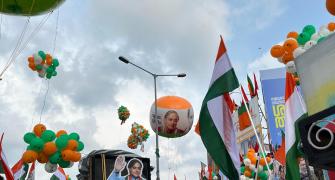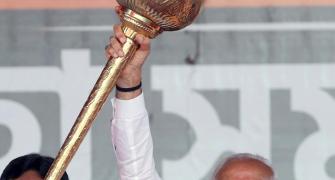More Chinese men are obese and an increasing number of students have poor eyesight, a national physical fitness survey has found.
About 9.3 per cent of men between 20 and 59 suffer from obesity, up by 22 per cent compared to 2000 when the country released its first National Physical Fitness Report.
In the 40-59 age group, the rate of obesity stands at 11.7 per cent, according to the latest report released by the General Administration of Sport.
The administration, along with nine other central government departments, randomly sampled 2,45,035 people across the country.
The overweight rate of men has reached 33.2 per cent, up 1.3 percentage point.
But in the same age group of women, obesity and overweight rates remain much the same as in 2000.
The obesity rate among students has also increased by at least one percentage point, while strength and stamina are on the decline, the report said.
"Chinese youth have been suffering from a steadily deteriorating health condition over the past 20 years", a senior official in the Ministry of Education Yang Guiren said.
He blamed the phenomenon on changes in traditional diet, reduced physical activity and increasingly sedentary lifestyles.
He cited a survey that shows that about 60 per cent of students do not exercise regularly, and 29 per cent of them said they do not have time for it.
Meanwhile, 31 per cent of primary school pupils are near-sighted, up by 8.5 percent from 2000. The rate rises as the age increases, with the highest hitting 82 per cent in college students.
To improve physical health, the Ministry of Education has urged primary and middle schools nationwide to increase PE classes and to ensure that students are given time for physical training every day.
However, the overall picture is brighter. The composite index of national physical fitness, with main measurements such as body size, strength and physical activity, has increased by 0.75 per cent over 2000.
Sheng Zhiguo, an official with the sports administration, said the survey provides a "systematic report on the status quo and pattern of change".
The report also indicates that urban Chinese are more physically fit than rural people. Geographically speaking, residents of Shanghai, Jiangsu, Shandong, Guangxi and Beijing have the highest composite index, while Xinjiang, Guizhou, Qinghai and Tibet, the lowest.
"It shows that national physical fitness has a geographical distribution high in the east and low in the west," Sheng said, citing the gaps in income and living conditions as major reasons.







